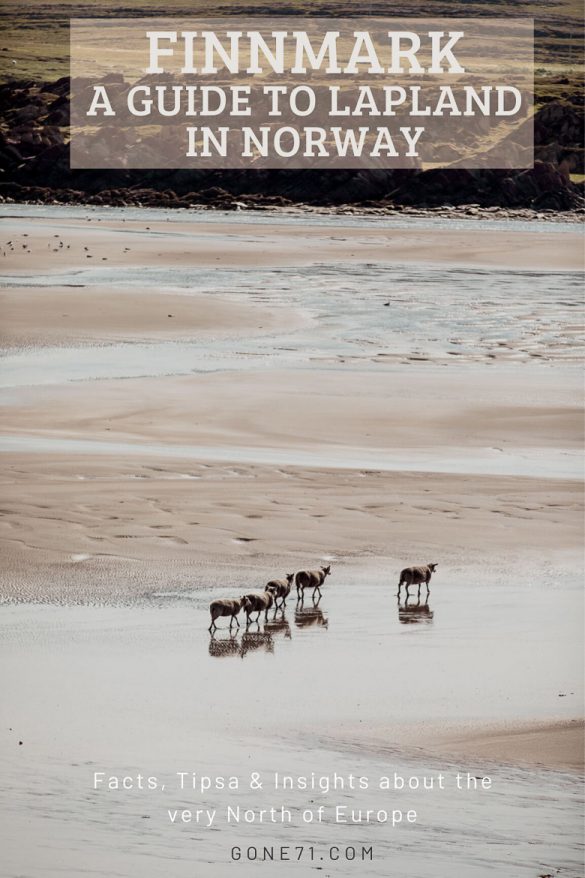Finnmark (nor.: Fylke) is the northern most region in Europe and one for the purists. All roads to the North come to an end here. It’s a playground for outdoor enthusiasts, inviting for extensive hikes and trekking expeditions. The Varanger-Peninsula in the east of Finnmark features some of the best bird watching possibilities in Norway and the fish grounds are among the richest in Europe.
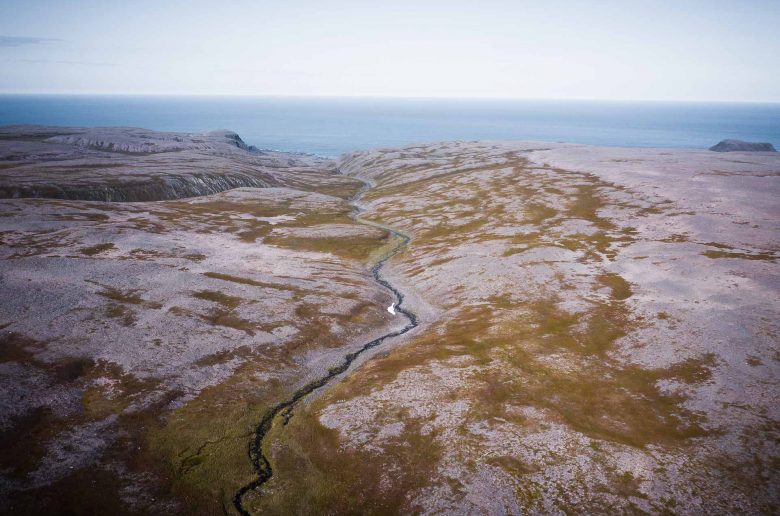
Until January 1st 2020, Finnmark was the also the northern most political province of Norway but was dissolved and is now merged with the neighboring province of Troms. Even though the correct name is now ‘Troms og Finnmark’ we will refer in this article only to the former Finnmark region in the North.
The Finnmark got it’s name from the ‘Finn’, which is a native word for the Sámi and ‘mark’, which translates to wood- or borderland. It is or was the biggest province in Norway and is even bigger than Denmark. At the same time it is also the least populated area (75.000) with only around 1,5 people per square kilometer. Since a majority of the inhabitants live in urban areas and along a narrow belt along the coastline, most of the land area is wilderness.
Finnmark – Land of the extreme
Finnmark is a region of extremes – not only in terms of nature and living conditions but also geographical features. For seekers of extreme geographical locations it can be a wonderland. The Kinnaroden, on the Nordkinn Peninsula is the Northern most point on European mainland. Knivskjellodden – an app. 6 hours walk further North-West from North Cape – is Europe’s Northern most point on an island (if you neglect Svalbard) and located on the Island of Magerøya. With Honningsvåg you can visit the worlds northern most city and Slettnes Fyr, near Gammvik is the worlds Northern most light house on mainland.
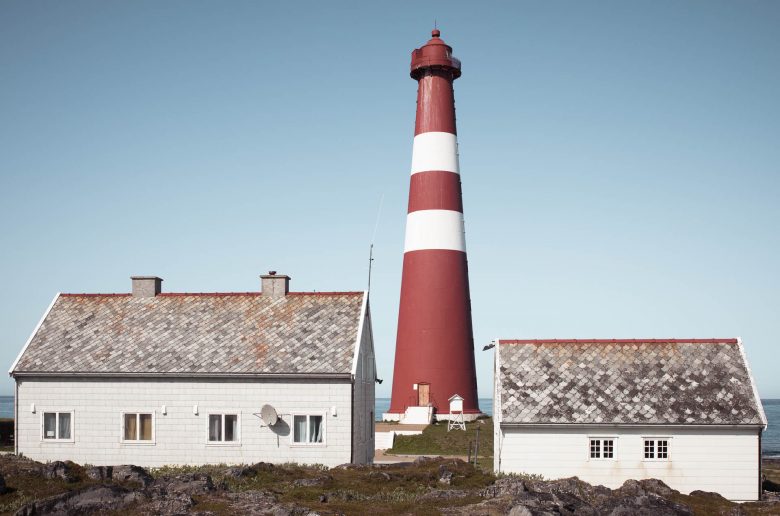
Winters are long and at 71° North you will find around 2 months of polar nights where the sun never rises above the horizon. Even before and after that time it will take a while until the sun is up for more than 3 hours. However, usually there is always at least some dim light so don’t imagine it pitch black. This is the time of the magical northern lights and you can see them usually from October to April.
Conversely in summer you’ll find the midnight sun shining for more than 2 consecutive months. If you spend your time further north like Berlevåg the sun will not set from beginning of May till the end of August. A pretty long day and it is the most active time of the year up North. Usually sleeping is reduced to a minimum and you can pursue outdoor activities 24 hours a day.
People and Culture
Finnmark is the home to more then half of Norways Samí population with hotspots in Kautokeino and Karasjok. They constitute around a quarter of the total population. The Sámi history in Norway is closely linked by great repression of the Norwegian government and its “Norwegianization” policy – an attempts of eroding Sámi culture and replacing it with the non-indigenous Norwegian way if life. This was especially a problem in coastal areas since the non Sámi population foremost resided along the fjords living from fishery. In the inland regions like Kautokeino and Karasjok, Sámi culture was more preserved and these are until the present day the cultural centers for the Sámi population in the North.
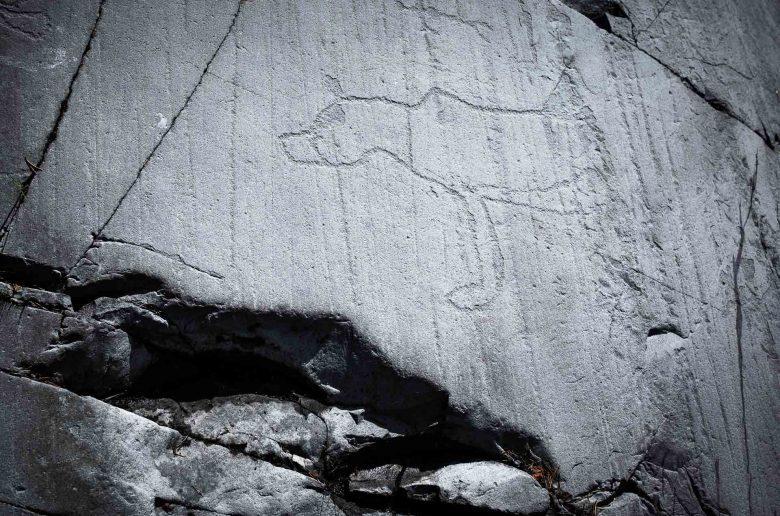
There is proof of settlement in the region dating at least 10.000 years back. The first to appear in the history books is the Komsa culture, a Mesolithic hunter-gatherer culture. In the surrounding area of Alta more than 6000 rock carvings were discovered since the early 1970s dating back at least 7000 years. The largest such area at Jiepmaluokta was turned in a well known open air museum and is part of the UNESCO World Heritage Sites. If you are in the area this might be worth a visit if you are interested in ancient cultures.
Things to do in Finnmark
Usually people who travel the northern most region of Europe are either interested in the vast nature and tranquility of this area, big fish or (rather unfortunately) accomplishing that trip to North Cape (more later). This is not the place for animated entertainment and even though there are a lot of tour offerings, we think Finnmark is best to be explored on your own. Rent a car, bring your motorhome, go by bike, by snow mobile, by backcountry skis or cross the Varanger Peninsula by foot. There are plenty of options to experience the wilderness of the North. The 3.500 kilometers of coastal line give a lot of options for shore fishing and the rivers will provide you with the best fishing grounds for salmonid fishes in Europe.
Roam the land for days under the midnight sun with a minimum amount of sleep or feast your eyes on the magical spectacle of the northern lights during the long winter. The possibilities for nature enthusiast, travellers, photographers and fisherman are endless.
See the end of the road – North Cape
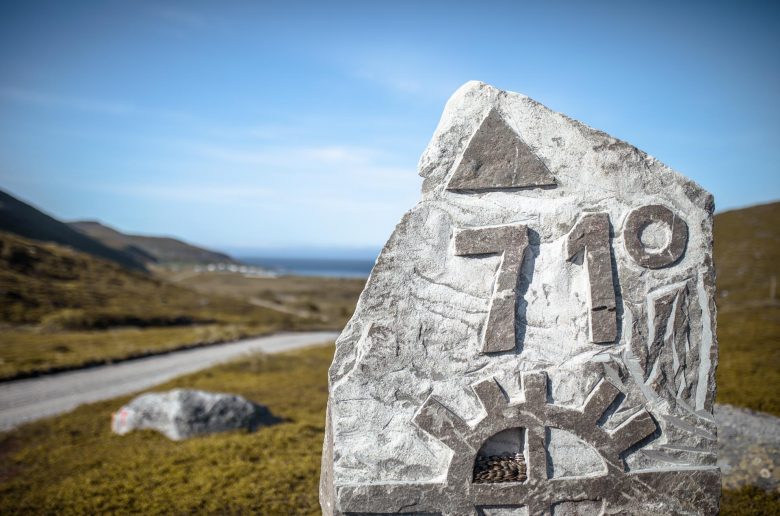
Probably the most famous and controversial destination in Finnmark is the North Cape at 71° 10′ 21″ North. The place so many traveller have on their bucket list. Even though most have heard the rumours of the touristic trap at the end of the road, ever year around 200.000 people go for this destination during the short summer. Visiting North Cape has become a trophy for so many, an achievement that you can literally frame and pin in your living room. To be fair, this is not necessarily a bad thing but you should at least inform yourself what you are walking into.
The 300 meter cliff called “North Cape” is not the real thing it pretends to be. More accurate would be the Northern most parking place for mass tourism in Europe. Around 4 km (2,5 mi) to the Northwest is the neighbouring point, Knivskjellodden that is actually 1450 meters (4750ft) further north. And there are also some other undeniable facts why North Cape is construction of the tourist industry: North Cape lies on the Island on Magerøya, so it is not on the mainland of Europe. And if we consider islands you would probably have to consider Spitsbergen with its northern most point Rossøya, at 80°49′44.41″ N (ca. 1.000 km further North) as well.
However, even the official certificate (that you pay for of course) states that you have reached the Northern most point of Europe if you park at North Cape. So if you are just looking for that trophy and to ad the #northcape to your instagram feed you are save – even if it is not quite true.
For those who feel summoned to more private destinations or who want to experience the geographical extremes of the North, we have good news. There are several alternatives that you should consider.
Alternatives to North Cape
There are alternatives to the North Cape for pretty much everyone. You can undertake the moderate 17 km (11mi) hike to Knivskjellodden that is considered by most as the real North Cape. If you want to scrap the latter from your bucket list without compromising too much, this is the best choice.
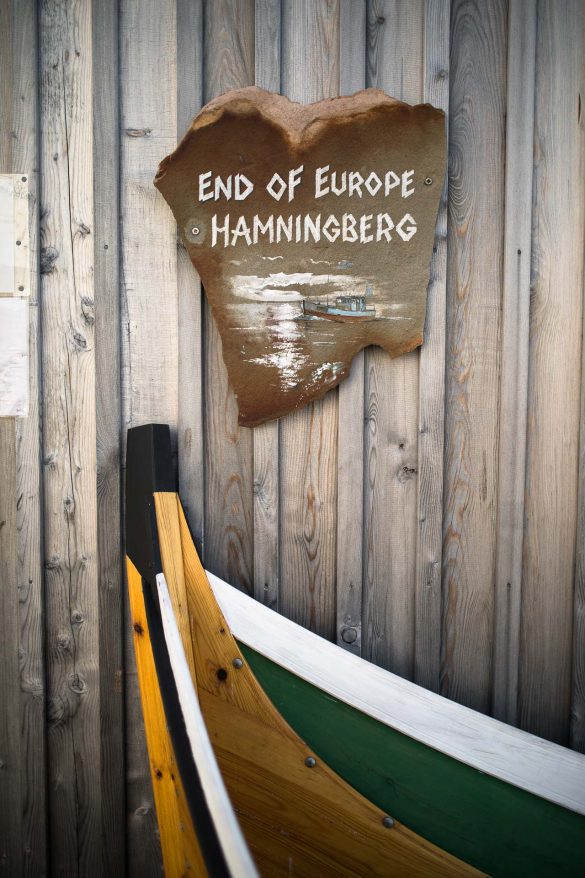
The well trained purists might want to consider Cape Nordkinn (Kinnarodden), which is the northern most point of the European mainland. A minimum of two days is required to achieve this little expedition. It’s a 23 km (15 mi) trip (one way!) that leads through harsh stony terrain (no trek). You can also go by boat from Mehamn. Another option is the lighthouse of Slettnes Fyr near Gammvik. It is branded as the Northern most mainland lighthouse in the world and a scenic place for hiking. If you are looking for “the end of the road” or “the end of Europe” you can opt for Hamningberg in the East at the Varanger Peninsula.
In our opinion there are many places that we consider better destinations than North Cape and you can find a detailed overview of alternatives here:
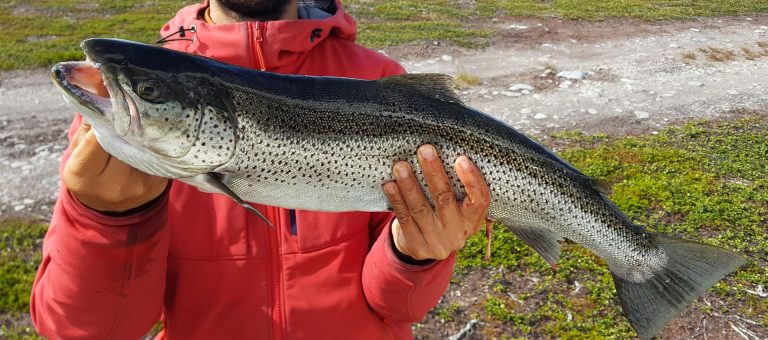
No matter if you are looking for that record salmon, a beautiful arctic char or a 100 lbs halibut. Finnmark features some of Europe’s best fishing grounds for most preferences. No matter if you are a total beginner or a seasoned pro, the possibilities for fishing are sheer endless and you can pursue this activity all year round. Rivers like the Tanaelva. Lakselva or Altaelva are considered one of the best salmon rivers in Europe and there are plenty of tributaries and other fisheries that are superb fishing grounds for salmon too. If you feel that the strict regulations and expensive licenses involved are not your style you might want to head of into the backcountry and try your luck with the beautiful arctic chars instead. You can go with your spin fishing equipment or master the art of fly fishing and if you are on your backcountry survival trip you can challenge your self by surviving on fish.
In the winter months when the ice hits a minimum of 5-centimeter thickness, the ice fishing season starts and that is the time where locals start to drill holes into the surface of lakes like mad. All you need is an ice fishing rod, some bait and a drill. You can always simply ask some locals to help you out to make that hole. If you are unsure what to do you can always book an ice fishing trip in almost every region in Finnmark.
- Licenses
For freshwater fishing, acquiring a state fishing license (every post office) is mandatory for everyone aged 16 years and older. Apart from the state license you need an extra permit for inland fishing on government owned land and one for fishing in the salmon rivers. Furthermore you need to disinfect your whole fishing equipment if you come anywhere close to a salmon river in the whole region. This is mandatory to prevent the salmon disease gyrodactylus salaries from spreading and strictly enforced. There are usually many places in every region where you can disinfect your whole equipment. You have to carry proof of disinfection with you at all time fishing. Fishing in the sea is free and you do not need a permit. So if you just want to catch your occasional fish from the shore opting for cod and saithe is a good option.
- Salmon
Every year the Tana river along with its Norwegian tributaries produces by a big margin the most and biggest salmon catches in Europe. It’s also the fishery where – with 35 kg – the biggest Atlantic salmon of Europe has been caught. Other very productive and popular salmon fishing rivers are Repparfjordelva, the Altaelva, the Vestre Jakobselv or Lakselva. However, the possibilities are plentiful and some of the most scenic fishing locations are smaller rivers in the backcountry.
- Arctic Char
The mighty arctic char with its red bellies the male get when becoming mature is our personal favourite. Some of the best fishing grounds can be found in the fjäll-lakes, e.g. in the Varanger Peninsula. This fish is also a prime target during the ice-fishing season.
- Trout
Trouts are very common in the rivers and lakes of the north. Usually, when speaking of trout people refer to the river dwelling brown trout. Other forms of trout include lake trouts (lake locked) and the migratory sea trout. They are all the same species of fish that adapted to different habitats. It’s a very popular fish among anglers and apart from salmon probably the number one freshwater fish in the north. Sea trout is a very interesting option if you do not want to spend money on the rather expensive fishing licenses for the salmon rivers. Since they live along the coast you can fish them for free.
- Grayling
This silver-grey freshwater fish from the salmon family features a marking dorsal fin – also called the sail. They prefer cold clean running water and are best found in the south of Finnmark towards the boarder of Finland. They are usually in a god mood to bite and can be best caught fly fishing.
- Marine Fishes
Cod and its relative the saithe are the most common salt water fish in the North. Smaller specimen can be caught from the shore, however saithe will usually be more present and easier to catch. It is a powerful swimmer and navigates well in strong currents. If you have a boat (or rent one) you can opt for big halibut and bigger specimen of saithe and cod.
For more details on different species of fish in the Northern countries look here:
Find tips, techniques and insights on how to catch a fish in the Northern countries here:
Hiking and trekking in the national parks
Finnmark feature five national parks and loads of other opportunities to leave civilisation behind. Adventurers can walk straight for days off the beaten track but also easy and rewarding day hikes are very common option.
- Seiland National Park
- Stabbursdalen National Park
- Øvre Passvik National Park
- Varanger Peninsula National Park
- Øvre Anarjohka National Park
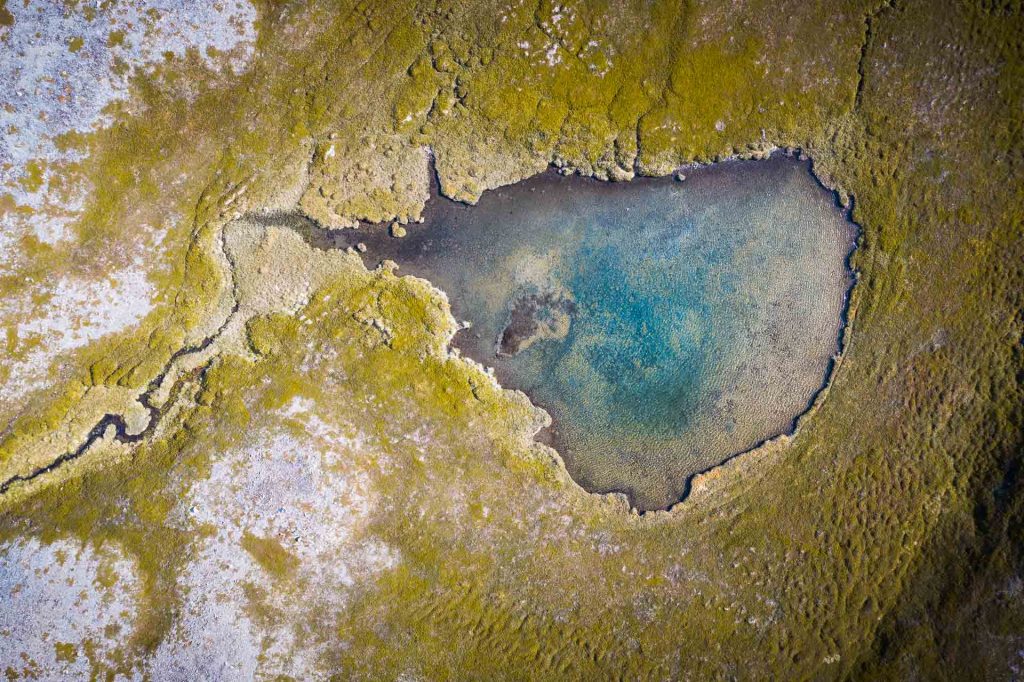
The different National parks have very distinct characteristics. The Øvre Anarjohka National Park at the boarder to Finland is the Norwegian counterpart to the Lemonjoki National park in Finnish Lappland with a huge undisturbed forest and wilderness area. The Øvre Passvik National Park on the eastern boarder to Russia is among others home to the biggest brown bear population in Norway. The Varanger Peninsula National Park features a beautiful tundra landscape and can be crossed in a couple of days by foot. The Stabbursdalen National Park features the world’s northern most pine forest. Finally the Seiland National Park is set on an island near Hammerfest and hosts the two Northern most glaciers in Europe.
For detailed information including a map about (free) wilderness huts and shelters in Norway look here:
For general information on camping in Scandinavia see this detailed guide:
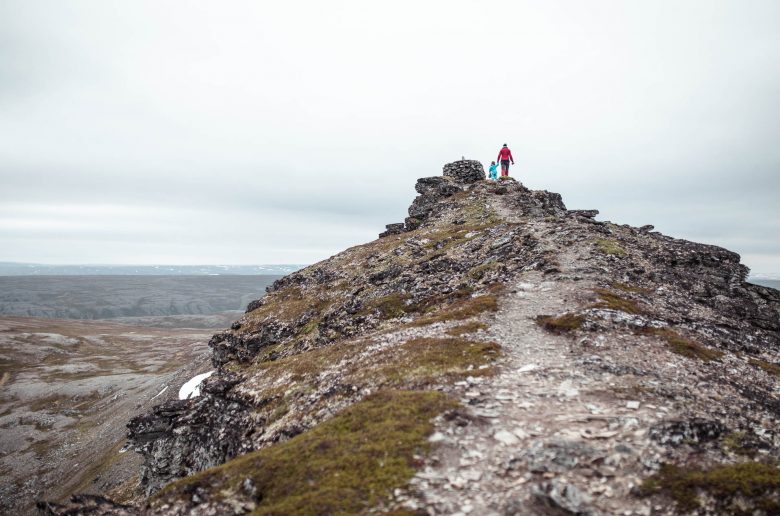
Make a daytrip with your children or vanish for an undefined time into the wild. National parks usually offer hiking options for all levels. For simple daytrips there are usually information points with marked hiking routes and round trips that you can usually follow without bringing your own map. However, you can find scenic day hikes literally all along the roads. If you drive one of the fjord roads you’ll encounter many beautiful places that invite for a stroll.
If you are looking for the ultimate trekking experience in the wild you should plan a wilderness hut or shelter tour and/or bring your own tent. The Øvre Passvik National Park or the Varanger Peninsula National Park offer a variety of wilderness huts that you can take advantage of on a multiple day expedition. Don’t forget to bring a decent map and/or a GPS device. You’ll usually be alone on your trek and there is no one around to help you in emergency cases. However, we believe that experiencing the wild by such is one of the best things you can do.
Meet the Sámi and their culture
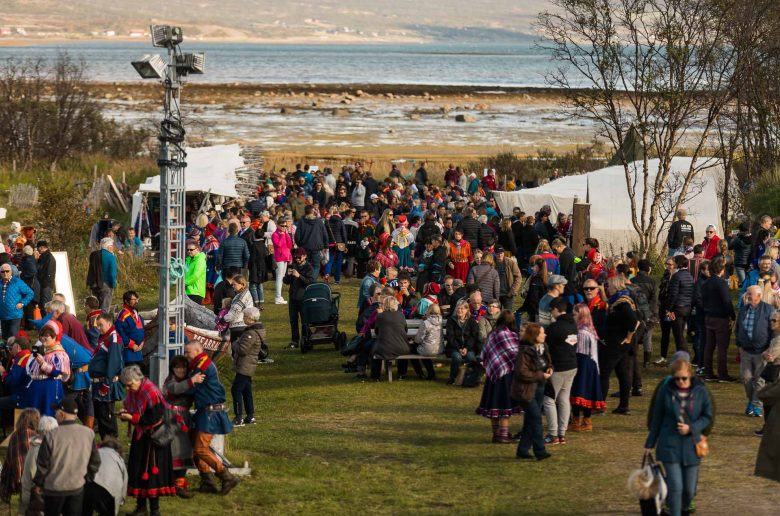
The Sámi culture is an essential part of the life in Finnmark. If you want to experience traditional music, Sámi art, food or reindeer husbandry there are several places to do so. Kautokeino and Karasjok are considered the Sámi centres of Finnmark. These places offer a variety of exhibitions, tour offerings, handicraft and possibilities to interact with and learn about the Sámi way of life. The National Sámi museum and the Sámi parliament are also located in Karasjok so for deeper insights these are both excellent destinations.
Alternatively you can join the local natives in one of their traditional festivities. The annual Sámi market in Varangerbotn around the end of August is a great opportunity. Even though it is a rather small festivity with around 2000 visitors over the course of two days, you can consider it the real thing. This market is almost exclusively made for Sámi people to meet, celebrate and socialize. That does not mean that visitors are not welcome but it is not promoted and the entire program is in native language. It’s a very familial event and a great opportunity to meet Sámi culture close up.
See our guide to Lapland for further information on Sámi and culture:
Visit Finnmark in winter
If you don’t mind the temperatures winter is a magical time in the north. There are around 200 nights a year that feature the stunning aurora display and the clear dark winter nights are one of the best opportunities to see them. There are loads of touristic tour operators specialized in aurora viewings but in reality, all you need to know is when they are likely to occur (http://www.aurora-service.eu/aurora-forecast/) and to look up.
Cabins can be rented all year round and you can either stay on your own or take some all-inclusive offers. The usual touristic attractions include, reindeer sleigh riding, husky safaris, ice fishing or snow mobile rides. These are all legit activities and the number of tour operators for such activities are almost as plentiful as mosquitos in summer.
If you are looking for a more active program on your own you should take or borrow backcountry ski or snowshoes and head out for daytrips or even dare a wilderness hut tour in winter. The snow-covered icy landscape can be purely magical and you’ll be surprised to which places you can get to. Ice fishing either with an operated tour or on your own is also a good option. Due to the mild coastal climate sea fishing is usually possible all year round.
How to get to Finnmark
Finnmark is the most remote destinations in Europe and the only arctic region in the world that is fairly easy to access. There are two main options to get to the North of Norway. The fastest and most convenient is flying into one of the bigger airports. In case you have time you can drive all the way up for yourself.
Plane
If you opt for flying you can take a direct flight from Oslo to Tromsø, Alta or Kirkenes and connect from there to one of the smaller airports all around Finnmark with the specialized plane operator Widerøe. So flying as far as Vardø or to Honningvøg close to North Cape is usually no problem. There are around 250 flights a week departing from Oslo to the northern parts of Norway and you can take further connections from there.
Domestic | Direct International Flights | Airport Transfers |
–> domestic and international flights to the major destinations in the North | Norwegian | Choose an airport from Avinor.no and select “to and from the airport” in the drop down menu. |
Norwegian | –> Helsinki London to Tromsø |
|
–> this company operates mostly in the North and provides flights to all available northern airports. | Wizzair (PL, UK) –> Gdansk, Krakow, London Luton |
|
| Lufthansa (GER) –> Frankfurt, Munich to Tromsø |
By boat
The enthusiasts and those who like it slow can embark the famous Norwegian Coastal Voyage Hurtigruten. The cruise is usually considered a trip on its own and will take you some time depending on where you go exactly. The journey starts in Bergen on the south-west coast of Norway and stops at 34 destinations before it embarks in Kirkenes. It’s also usually quite costly and can set you back between several hundred to even several thousand Euros. However for everyone who has the time and money it is a great way to see the beautiful fjord-landscape of Norway from a different angle.
Driving on your own
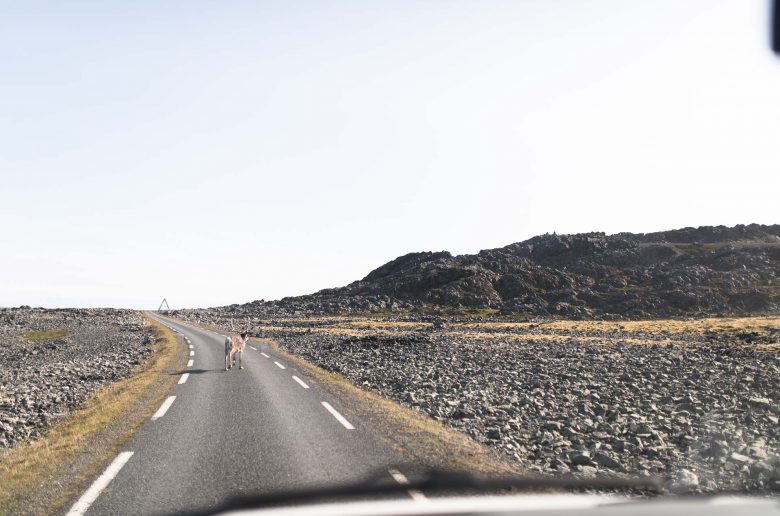
If you have a (rental) car, campervan or caravan, you can simply follow the main road network all the way up to the North. The fastest way to Finnmark leads you usually through Sweden or Finland but you can also opt for the longer but very scenic fjord route along the coast.
Streets in all countries are usually in very good conditions with low traffic, especially in the North. Having your own means of transportation in the North is very helpful to visit different places. It’s also a common option to fly to North and rent a car in one of the bigger destinations like Rovaniemi or Tromsø. The main streets are normally free all year round but you should be aware that it can be dark 24 hours a day, 7 days a week in the North with temperatures hitting -30° C (-22 F). So prepare properly if you head there on your own in winter.
By bus
Due to the long distances from the capitals to the north, direct busses to the North are rather inconvenient and also not very frequent. However, busses are a great means to get around in the North once you are there. There are good connections to all places in the North. If you want to get around in Finnmark by public transportation you can opt for Boreal Transport Nord AS which operates large parts of the area. For planning your trip you can check departures and general timetables at Snelandia https://snelandia.no.
You can find detailed information on how to get to Finnish, Swedish and Norwegian Lapland in this detailed guide:
What is the best season to visit Finnmark?
The northern winter lasts by our standards usually for half a year. The further you go North and the higher up in the mountains and fjälls, the longer you will find snow. So if you despise the cold you should not come earlier than May.
Winter
For those who seek the green glow in the night sky you have to visit the northern territories between October and April. It’s the time of the year when the whole landscape is blanked out with snow and the ice fishing season is upon the region. Don’t forget to prepare yourself accordingly for the harsh conditions.
Spring
After the snow melts, there is usually a big and very quick explosion of life and the first cycle of mosquitos start to hatch. In the northern most parts this can even be as late as June and Mosquitos are usually not that big of a problem if you go all the way up north. This is also a good time to visit the North if you like it especially quite since the main tourist streams start to come in around midsummer.
Summer
If you want to spend your summer with as much daylight as possible 71° North is the place to be. You can experience a staggering almost 3 months period of midsummer and permanent daylight. It’s the time for fishing ventures, hiking and backcountry activities and other outdoor activities. The same goes for mosquitos, which have their main activity during the summer months. Especially in the Øvre Passvik National Park and the Øvre Anarjohka National Park they can be an annoyance in this time.
Autumn
Seasons change quickly and after the midsummer comes to an end even in the Northern most parts of Finnmark, autumn with its beautiful colors knocks on the door. The beautiful colors of the famous Indian summer can be experienced best in the boarder region to Finland since the northern most parts are above the tree line. For nature lovers and harvesters it is a feast for eyes and bellies when even the last blueberries in Scandinavia get ripe.
See our detailed guide on how to protect yourself against mosquitos:
